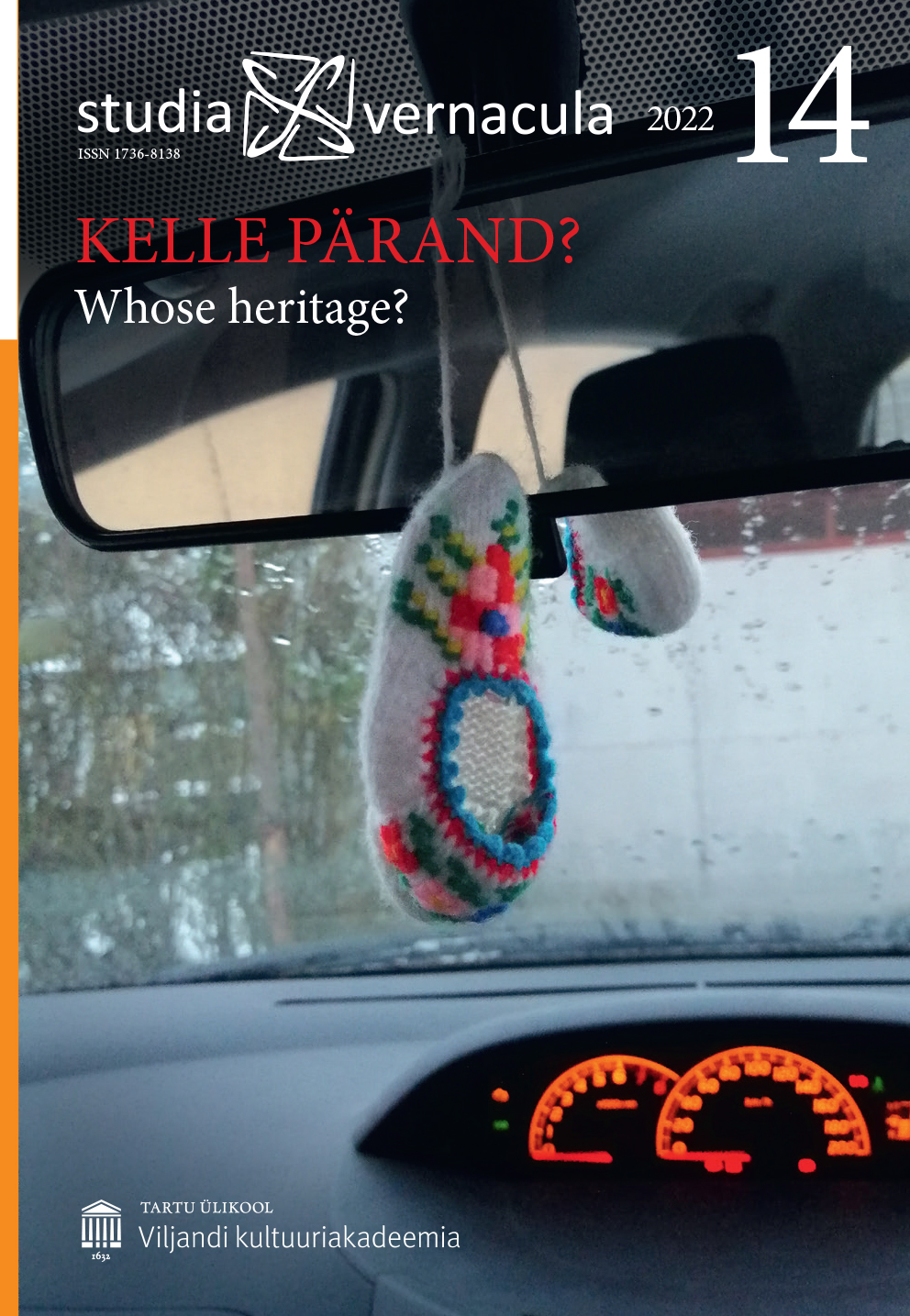Kultuurilisest omastamisest maailmas ja meil: saateks / On cultural appropriation in the world and in Estonia: a preface
DOI:
https://doi.org/10.12697/sv.2022.14.35-42Abstract
The translation article of this volume of Studia Vernacula is an essay on cultural appropriation by the American folklorist Jason Baird Jackson. This is an abridged version of the original article, which the author has reworked for our journal. Cultural appropriation is a phenomenon that can occur whenever there is contact between two (or more) social groups, especially when the balance of power (economic, political, symbolic, etc.) between them is not equal. The group in a position of power appropriates (takes over, essentially robs) the cultural phenomena – both spiritual and material – of the other and misuses them.
As might be expected, the most obvious cases of cultural appropriation occur in countries and regions with a long colonial heritage, more precisely, in those where the problem has later been thoroughly acknowledged and a voice given to the aggrieved group, often the oppressed indigenous people, but also other (ethno-)cultural minorities. Awareness of cultural appropriation always presupposes some kind of awakened consciousness on the part of the minority group, and the ability to communicate the problem beyond its own inner circle. Cultural appropriation can also be recognised from the outside, as an ethical problem among the dominant group. Nevertheless, some kind of subjectivity on the part of the affected side is indispensable here – so as not to be merely the object of external patronage without any capacity or wish to change the situation itself.
The Estonian reader might be concerned with the question of whether and to what extent it is possible to speak of cultural appropriation in Estonian ethnography or cultural history. Does the position inherent in American folkloristics, where the question of colonial heritage and the study of “other” peoples is clearly at the forefront, resonate with the (Eastern) European, Herderian approach to heritage, which seems to have been unanimously “ours” all along? In order to answer this question, we should first discuss possible minority groups in Estonia. So far, the Estonian state has been reluctant to grant anyone the legal status of an indigenous people for fear of setting a precedent, also in order to prevent any complications that might arise in connection with this.
Nevertheless, some ethno-territorial groups in Estonia have at least expressed the wish to consider themselves as indigenous peoples separate from “ordinary Estonians”. In this context, we can also point to instances of cultural appropriation, where material or non-material heritage has been collected from a community and brought to community to museums, probably not always using the most transparent methods. The researcher-collector, as representative of the scientific community, is always in a position of power. Formal and symbolic authority plays a role, so it is possible to manipulate the local people. Similarly, the history of Finno-Ugric research expeditions is not free from selfish or arrogant attitudes towards local communities.
In Estonia, the widespread use of folk costumes throughout the 20th century is an obvious example of cultural appropriation. The members of hundreds of choirs or dance groups need not have had any meaningful relationship with, or interest in the folk costumes of the parishes that they had to wear during performances. A costume that has lost its personality, torn away from its roots, cheapens and devalues its originality and value, and possibly also its heritage community.
Alongside the “colonising” attitude of the scientific communities and instances of appropriation born from poor knowledge, we can also speak of the attitude of more emancipated Estonians – distanced from their roots, towards rural life and its representatives, as well as folk culture in general. What to do in these cases, when progressive citizens, tired of city life for one reason or another, are moving to rural places to build a new life? They may feel sympathy for, and even interest in the local community and culture, but their value systems, lifestyle, habits and envisioning often do not coincide with those of the local “natives”. The question arises: at what point does the bona fide exploitation and marketing of local heritage cross the boundary of being disturbing to genuine local people?
Keywords: cultural appropriation, indigenous peoples, self-colonisation in Estonia

